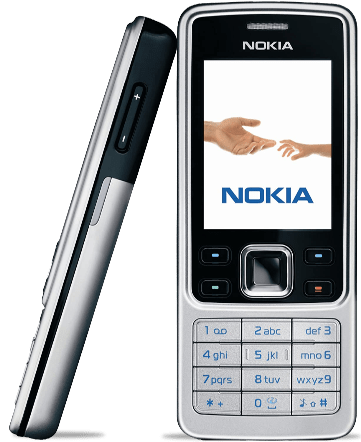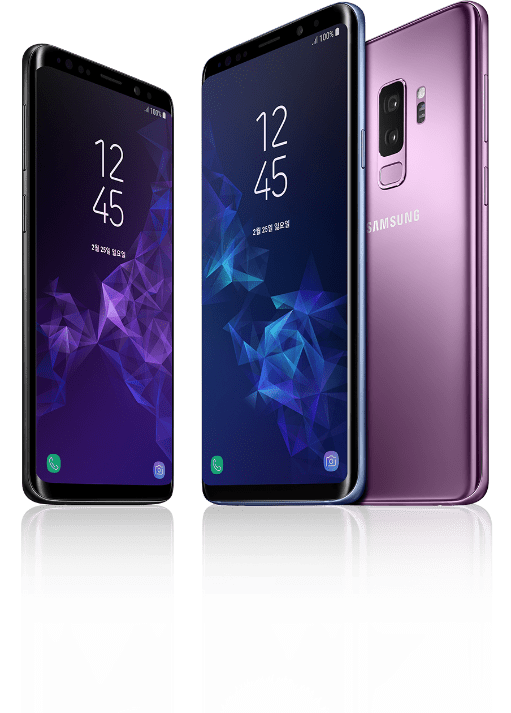If you were wondering which the largest smartphone vendors have been during the past 14 years, you may just be in for a little surprise…
 49.44%
of global
49.44%
of global  43.43%
of global
43.43%
of global  39.74%
of global
39.74%
of global  33.74%
of global
33.74%
of global  19.76%
of global
19.76%
of global  32.3%
of global
32.3%
of global  32.63%
of global
32.63%
of global  25.56%
of global
25.56%
of global  22.54%
of global
22.54%
of global  20.82%
of global
20.82%
of global  20.68%
of global
20.68%
of global  18.78%
of global
18.78%
of global  19.19%
of global
19.19%
of global  19.34%
of global
19.34%
of global We see Nokia as the biggest contender from 2007 to 2010, with about 60 - 100 million units shipped each year. According to global sales and shipment figures, this equates to an average market share of about 42% for Nokia, 15.8% for RIM (BlackBerry) 10.8% for Apple, followed by HTC with 5.1%, and then Samsung with just 3.7%.


Since 2011, Samsung's affordability has seen it quickly overtake Apple. Despite Apple's high cost, it's still one of the most sought after brands, after all, they are the leaders in the game, with their own operating system (iOS) and consistent design. Over the last 10 years, Apple followed closely behind Samsung with a constant average market share of about 15.7%, achieving its highest market share of 19.8% in 2012.
Samsung fluctuated between its lowest of 18.8% in 2018 and highest of 32.6% in 2013, with an average of about 23.2% during this period.
Overall, we saw Smartphone sales increase exponentially from about 122 million units sold in 2007 to over the 1 billion unit mark in 2014. Sales continued to increase over the next 5 years to about 1,5 billion units in 2019, until 2020, when Covid struck. In just one year global sales dropped back down to about 1.3 billion, taking sales back to 2015 levels.
In short, Nokia began as the largest smartphone vendor and held this title for 4 years, until succeeded by Samsung, which has been the largest smartphone vendor for the past 10 years.

Great news for iPhone fans - the best-selling smartphone model of all time was the iPhone 6 with 222 million units sold. Then came the Nokia 6600 with 150 million units, Nokia 5230 with 150 million, then the iPhone 11 with 102.1 million units and finally the iPhone 12 collection in 2020 with 100 million units.
It's worth noting that the iPhone has been the number 1 top selling smartphone for the last 5 years, with around 78.3 million iPhone 7's sold in 2016, 86.3 million iPhone 8's in 2017, 77 million iPhone XR models in 2018, 102.1 million iPhone 11's in 2019 and 100 million iPhone 12's sold in 2020. Although Samsung may have sold more as a brand, these iPhone models have proven to be the best-selling smartphones compared to any other model over the past 5 years.
| Make | Model | Type | Year | Million Units |
|---|---|---|---|---|
| Apple | iPhone 11 | Touchscreen | 2019 | 102.1 |
| Apple | iPhone 12, iPhone 12 mini, iPhone 12 Pro and iPhone 12 Pro Max | Touchscreen | 2020 | 100 |
| Apple | iPhone 8 and iPhone 8 Plus | Touchscreen | 2017 | 86.6 |
| Apple | iPhone 7 and iPhone 7 Plus | Touchscreen | 2016 | 78.3 |
| Apple | iPhone XR | Touchscreen | 2018 | 77.4 |
For all you Apple fans out there, you will be glad to see that Apple followed very closely behind Samsung's reign - and another thing to note is that their sales were very constant. In the earlier smartphone years, Apple was in second place, after Nokia. It is also said that Apple was the one who kicked off the Smartphone revolution, to begin with, with its first iPhone in 2007 (although it is recorded that IBM invented the first smartphone called the Simon Personal Computer in 1992)
We see from the smartphone shipment figures that the biggest smartphone contenders globally were Samsung, followed by Apple and then Huawei, Xiaomi, and OPPO. We also see in 2020, that even though Samsung and Huawei's sales may have dropped significantly during covid, Apple and Xiaomi's sales actually went up: with Apple rising by about 8% and Xiaomi rising by an almost incredible 18%.

(2018-2020 vs. 2015-2017)
Xiaomi continues to gain global market share quarter on quarter and Huawei falls out of the top 5 mostly due to the US trade ban. It's worth noting that Apple has now regained the #2 spot thanks to strong iPhone 13 sales
Q3 '20
. %
Q4 '20
. %
Q1 '21
. %
Q2 '21
. %
Q3 '21
. %
In 2005, Europe had the highest number of mobile phone subscriptions per 100 inhabitants, with 89.3, then the Americas with 52.1 and Africa with just 12.4. By 2020 both Europe and the Americas had more mobile phone subscriptions than people: Europe had 122.7 subscriptions per 100 inhabitants; the Americas 110.9 subscriptions per 100 inhabitants. This may seem strange at first glance, but it is quite common for people to have both a business and personal phone, or an additional phone with just a data SIM.
| Europe | Per 100 Inhabitants | The Americas | Per 100 Inhabitants | Arab States | Per 100 Inhabitants | Africa | Per 100 Inhabitants | Asia & Pacific | Per 100 Inhabitants | |
|---|---|---|---|---|---|---|---|---|---|---|
| 2005 | 581 | 89.3 | 459 | 52.1 | 84 | 26.3 | 87 | 12.4 | 833 | 22.6 |
| 2006 | 661 | 101.2 | 552 | 62 | 125 | 38.8 | 129 | 17.8 | 1074 | 28.8 |
| 2007 | 735 | 112.1 | 649 | 71.1 | 173 | 52.6 | 174 | 23.5 | 1398 | 37.1 |
| 2008 | 771 | 117.1 | 741 | 80.8 | 213 | 63.2 | 246 | 32.2 | 1773 | 46.6 |
| 2009 | 771 | 116.6 | 809 | 87.3 | 263 | 76.5 | 298 | 38 | 2164 | 56.3 |
| 2010 | 761 | 114.7 | 881 | 94.2 | 312 | 87.5 | 366 | 44.3 | 2625 | 97.1 |
| 2011 | 783 | 117.7 | 952 | 100.8 | 352 | 96.4 | 441 | 51.9 | 3029 | 76.7 |
| 2012 | 800 | 120 | 995 | 104.2 | 382 | 102.2 | 510 | 58.4 | 3234 | 81 |
| 2013 | 814 | 121.7 | 1043 | 108.2 | 408 | 106.7 | 581 | 64.7 | 3463 | 85.9 |
| 2014 | 809 | 121.1 | 1093 | 112.3 | 415 | 106.3 | 644 | 69.7 | 3681 | 90.4 |
| 2015 | 809 | 119.4 | 1103 | 113 | 419 | 105.7 | 714 | 76.1 | 3778 | 91.6 |
| 2016 | 808 | 118.9 | 1114 | 113.1 | 417 | 103.2 | 714 | 74.1 | 4094 | 98.1 |
| 2017 | 812 | 119 | 1104 | 111.1 | 417 | 101 | 744 | 73.2 | 4331 | 103.2 |
| 2018 | 813 | 118.8 | 1124 | 112.2 | 416 | 99 | 780 | 77.2 | 4497 | 106.2 |
| 2019 | 818 | 119.2 | 1139 | 12.7 | 424 | 99 | 836 | 80.1 | 4709 | 110.3 |
| 2020 | 847 | 122.7 | 1129 | 110.9 | 427 | 98 | 882 | 82.3 | 4503 | 104.6 |
Android maintained its position as the leading mobile operating system with 73% market share, while Apple's IOS is second with around 26%. Both operating systems were launched in 2007. Android's dominance is obvious due to the fact that the majority of smartphones, like Samsung, Xiaomi and Huawei, are sold with pre-installed Android operating systems. Will the large smartphone vendors like Samsung and Xiaomi create their own operating system in the future? Only time will tell.




